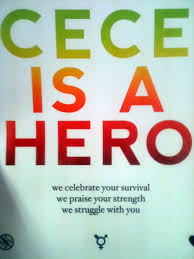
Ashley Smith and her guards
On October 19, 2007, 19-year-old Ashley Smith, a prisoner under suicide watch, killed herself. Seven guards watched and did nothing to stop her. They were under orders to let her go. Someone wanted to teach her a lesson, not to be `a nuisance’. And so, she died … or was killed by active neglect.
Now, five years later, perhaps, the Canadian government will finally conduct an inquest. The murder of Ashley Smith didn’t stop at her death. For five years, the Correctional Service of Canada has fought tooth and nail to bury any evidence of the event … other than the corpse of Ashley Smith, the pain of her family and friends, and the horror.
For five years, the Canadian prison system first denied the existence of the damning videos released, finally, just recently. They didn’t inform the parties in the inquiry of the existence of the tapes. Then, when the tapes could no longer be denied, the Correctional Service tried to keep the public from having access.
If Ashley Smith were the only young woman prisoner who was effectively tortured in prison, left to die slow death or `self-inflicted’ death in solitary, left to die while monitored in suicide watch, her death would indeed be a tragedy.
But Ashley Smith is not alone in her fate. Many prisoners, and especially women prisoners, living with mental health disabilities, find themselves deep in a system of abuse and exploitation. Many prisoners, and especially women prisoners, find their attempts at self-harm are not viewed as symptoms of a need to be treated but rather as bureaucratic inconveniences. Taking care of mentally ill prisoners `costs’ too much. Caring about the welfare of mentally ill prisoners costs way too much. Caring about the destiny and lives of young women … priceless.
There has been and will continue to be much condemnation, much finger pointing, all of it well deserved. But at the same, Ashley Smith’s death by proxy was precisely part of the `service’ the Correctional Service offers. Adjudicating those involved is important, getting the details of the story is important, too. Transforming the system and the nation and world that built it is necessary.
That won’t bring Ashley Smith back. That won’t mean she didn’t die in vain. But it could mean something for those who follow.








